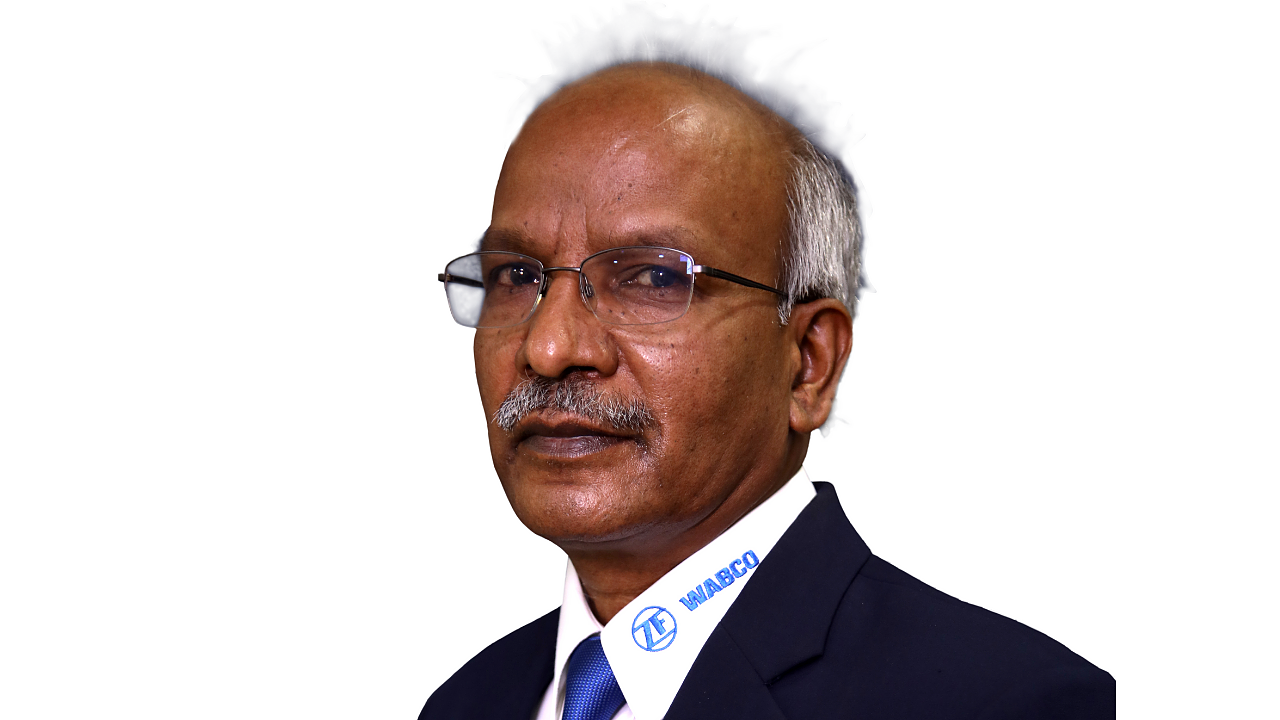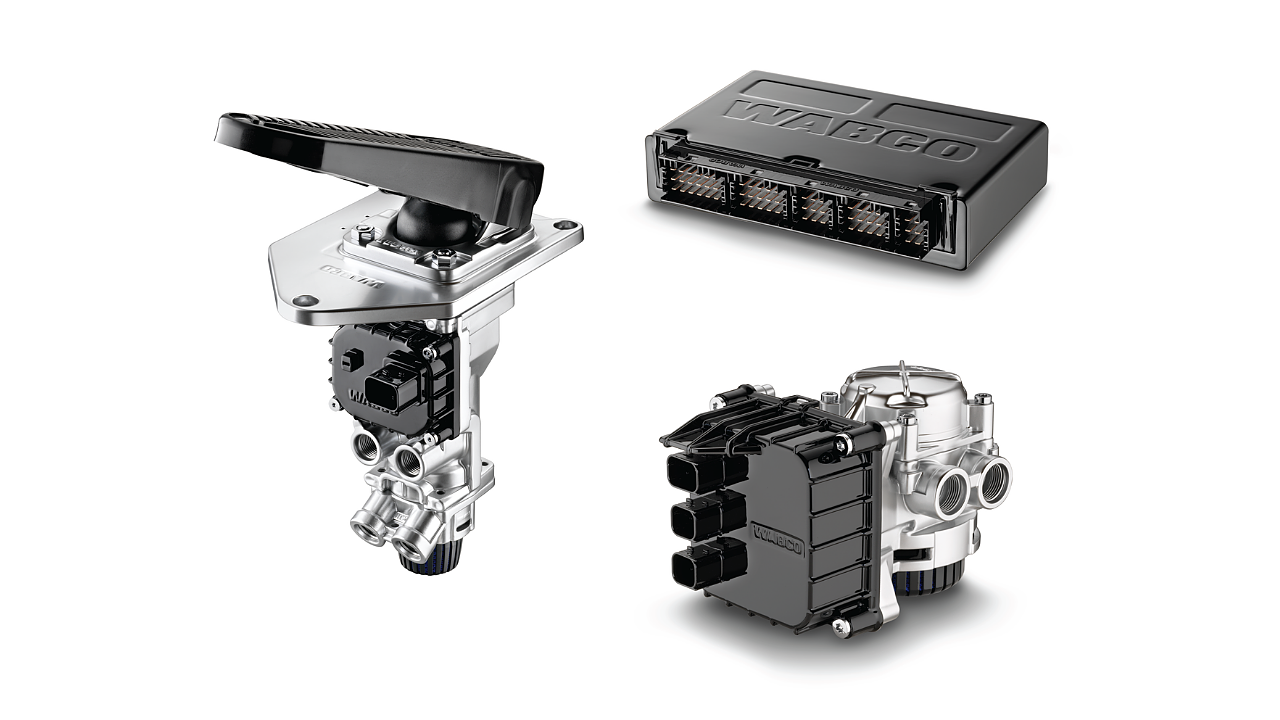
P Kaniappan was appointed Managing Director, Wabco India in July 2014. Prior to which, he led the company in the strategic growth market of India as Whole-time Director since 2009 following the company’s acquisition of a majority stake in the Brakes division of Sundaram Clayton. He was ranked amongst the top 100 and Best CEOs in 2016 by Business Today. He was also recognised with Frost & Sullivan's IMEA Lifetime Achievement Award in 2018, for his contribution to the manufacturing sector.
Firstly, can you update on the new proposed Greenfield facility?
The proposed Greenfield facility in the Oragadam area is to support export growth as our plant in Mahindra City is now fully utilised, and we have good order inflow. With the visibility that we have for the next few years, there's a need to expand.
Both the India and global boards have approved the plan to acquire land. It stays at that level right now because the new government is busy with the COVID level activity. So the first focus is to get the land allotted. We are working with SIPCOT officials.
What is the size of land you are expecting?
We are looking at about 50 acres as the new plant will serve not only Wabco India – otherwise called ZF CVCS (Commercial Vehicle Control Systems) business – but also be a platform for the other nine divisions of ZF that would like to expand in India.
We need to localise for growth. Wabco has built good manufacturing competency; the footprint is already here, and taking that support, we will be able to help other divisions localise the products they would like to offer to Indian customers. Also, some of the products could be manufactured in India and at locations in other countries. Therefore, the new plant is for a larger purpose.
Does it mean you will get additional responsibilities, also from the global perspective?
Yes, India is a key growth market for the future. ZF would use CVCS India's expertise in manufacturing and use it to look at India from a different perspective to reach out to the customers. Like other divisions, CVCS will have its own space at the new site. Each one will have its competencies under one umbrella in one campus.

Do you see this turning out to be a hub for some technological aspects or families of products?
We are positioning CVCS India as a Centre of Excellence for frugal engineering and innovation in manufacturing. When this unit was under TVS Group, we perfected the art of lean manufacturing, frugal engineering, TPM, and the TQM framework. That is what CVCS India brings to the table, rather than trying to position ourselves as a Centre of Excellence in manufacturing. We are becoming a manufacturing hub by ourselves. Already, the entire plant in Mahindra City is a manufacturing hub.
Secondly, our strength is in engineering. We have emerged as a key contributor to frugal engineering, shop floor engineering, and software development. Most of the software for CVCS is written in Chennai.
Thirdly, we are trying to make India a digital engineering hub. In August of 2020, we opened the Digital Technology Centre in Bengaluru, in which we will be developing futuristic digital technologies not only for India but also for global requirements. We are expanding now.
So, we are trying to make India a Centre of Excellence for manufacturing, frugal engineering, software development and digitalisation.
While many automotive industry players have struggled due to COVID-19-related effects, you have announced expansion plans. Is there a strategy to leverage the lower cost of finance and the cheaper availability of land?
From the beginning, we have had a very long-term view of India. There are short-term problems, ups and downs, but we believe in India's long-term and growth story. We believe, with the technologies that CVCS has globally, there is a huge opportunity for India. In terms of value per commercial vehicle, in India, we are still in the range of € 500-600. In certain markets, it is about € 3,200.
We are steadily expanding our domain areas of safety and efficiency to the connectivity space. We have partnered with a couple of Indian OEMs for our connected vehicle programme. Right now, there are about 30,000 vehicles on the road with these systems.
There's a vast pipeline of technologies available. India has now reached BS-VI. This is an opportunity for companies like ZF because, in electric mobility, the channel of technologies available globally will come to India. So, our focus on India will continue from a long-term perspective.
Secondly, we believe India can significantly contribute to our global success in the engineering area because of its excellent talent pool. We can partner with ZF engineering centres anywhere in the world to become a major contributor. Germany develops the best technologies, but there is something that India can also contribute to. That’s going to be our growth area from a long-term perspective.
We started in 2008 with our first invoicing, and now we are making € 400 million in sales from exports. It will only grow because of the cost competitiveness and the quality levels we offer, leveraging our engineering competency.
In terms of the present timing, very low interest rates, depressed market conditions, and cost levels may be topics to consider, but that is not our primary objective. We want to be here with a long-term focus.
With the upcoming facility, to what extent do you see the content per vehicle increasing?
It is upwards of € 3,200 in the developed market, where some of the systems are fully loaded. In India, especially with commercial vehicles, the focus is always on value for money. If we compare a similar market, Brazil for example, those markets are already at $ 1,500 (about € 1,270). India can reach that point; there is the potential for it.

There are several disruptions due to a shortage of semiconductors, containers and port congestion. How do you mitigate these issues?
The first issue we faced was on the semiconductor for some ECUs. We opened a war room, and every day, there were discussions to allocate the product. We went through very critical times, but by using their buying power, ZF somehow managed to secure semiconductors, at least for India. We did not encounter any situation, where we had to stop supply to a customer because. Of course, the market also was somewhat low. If we had these issues during the volumes in 2018, things would have been entirely different.
At least now we have some visibility of protecting the customers, largely by launching some alternate products in some areas. Notably, in telematics, we had to go in for some alternatives.
It had some impact on the cost, as we sometimes had to go for spot market purchases. But we have managed so far, and I think we can manage well for the next few months. Container shortage was also an issue; sometimes, we had to airlift the material as the global demand was steady, while the lockdown in India during the first and second waves of COVID affected business continuity. That was a challenge, but by and large, we managed it.
What are the opportunities you hope to get from new mobility?
BS-VI helped us primarily because our compressor has become bigger as the engine needs more air than BS-IV. About 60% of our compressors have become 318 cc from the earlier 160-230 cc. Besides, the air processing systems have been upgraded to the global portfolio; the performance standard has been raised. This is one area that supported us with an increase in content per vehicle. In addition, there were requirements for auxiliary systems like exhaust brakes, which some customers selectively applied.
We have also launched fleet management solutions, both hardware portal and software.
About three years ago we started working with customers like Tata Motors on the electric bus programme. In India, electrification is in the bus segment for commercial vehicles, and we are well-positioned with CVCS technology itself. For example, electric buses use an electric compressor. For some of the OEMs, we are supplying Gen-1 compressors, and with some, we are partnering for Gen-2 compressors.
In addition, electric buses need an electronic braking system. The whole focus of the electric bus is on how to minimise energy consumption. Our electronic braking is an intelligent system as it distributes the brake energy by selecting the quantum of brake applied to each wheel.
We have electronic control for air suspension. All these technologies will save energy for electric vehicles much more than anything else. Now, under ZF, we have much more to offer in several areas. We are already discussing with many customers to support their electrification programmes. I think critical success depends on how we compete by localisation and other means.
We can provide our connected vehicle programmes and tyre pressure monitoring system as they save energy. From the ZF side, the entire drive system is available. In short, except for wheels and tyres, everything is available with the group now. We just have to ensure the market accepts the price points.
Tell us about your manufacturing facilities?
We have plants in Ambattur, Mahindra City, Jamshedpur and Lucknow. In addition, we have a customisation warehouse in Pantnagar, where we also produce a few assemblies to support Ashok Leyland.